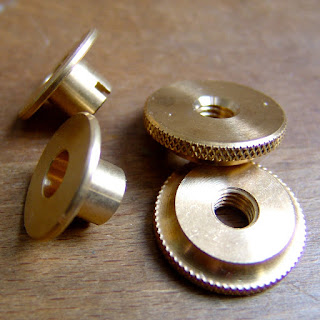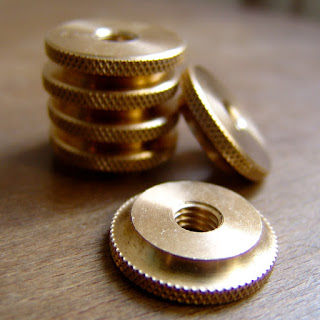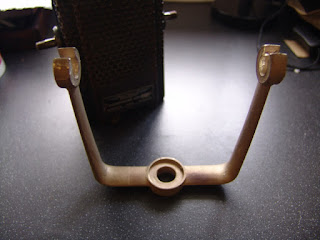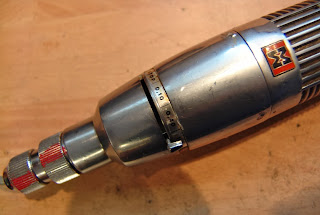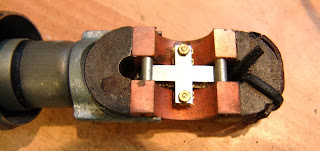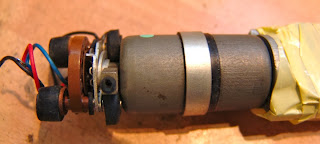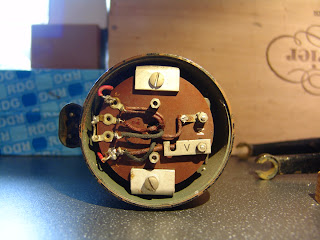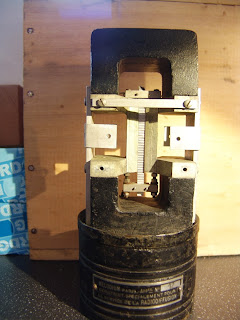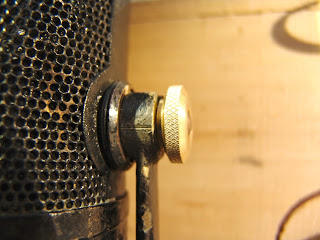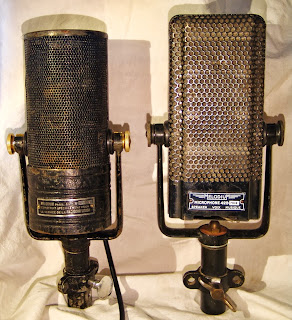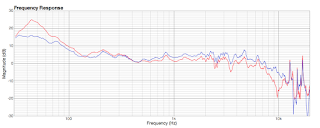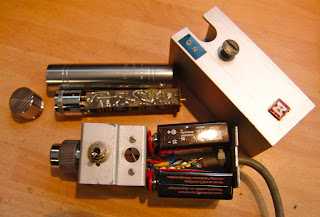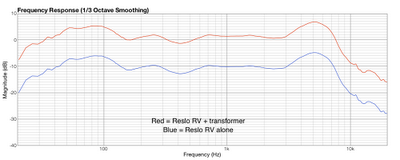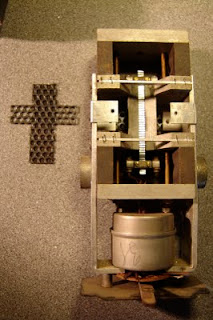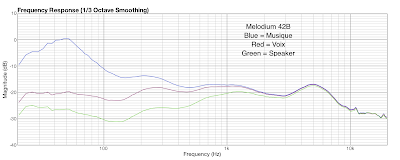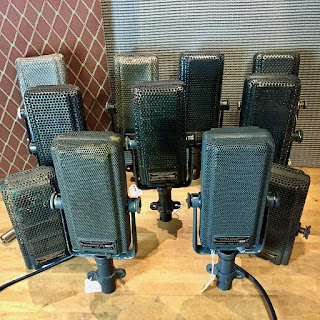 |
| Eleven Melodium 42Bs in for service at Xaudia |
 |
| Replacement magnet assembly for Melodium 42B ribbon microphones |
The horseshoe type magnets found in some of these mics tend to hold their field well and rarely fail. However, I have occasionally encountered examples where the magnets have cracked and lost some of their strength. This may happen if the mounting screws are overtightened or the microphone has been abused.
Around half of the 42Bs use block magnets with a carrier bar to complete the magnetic loop. These are more prone to losing their field especially if they are removed from the microphone for some reason. It is hard to predict how these will behave. Luckily we can measure them and see if they are up to scratch. A healthy microphone should show above 3000 Gauss in the ribbon gap to give good signal to noise performance.
In this example, the field is down to around 2400 Gauss, which is at about 80% of where it should be. That amounts to 2dB loss of output – not yet a disaster but may be heading that way. With the new assembly in place we measure around 6000 Gauss, which is up + 6dB on a ‘good’ stock Melodium 42B.
*Magnet failure is rare. A bad ribbon is the most common cause of a weak signal in these microphones, and would be worthwhile testing the ribbon before embarking on any kind of magnet service.


